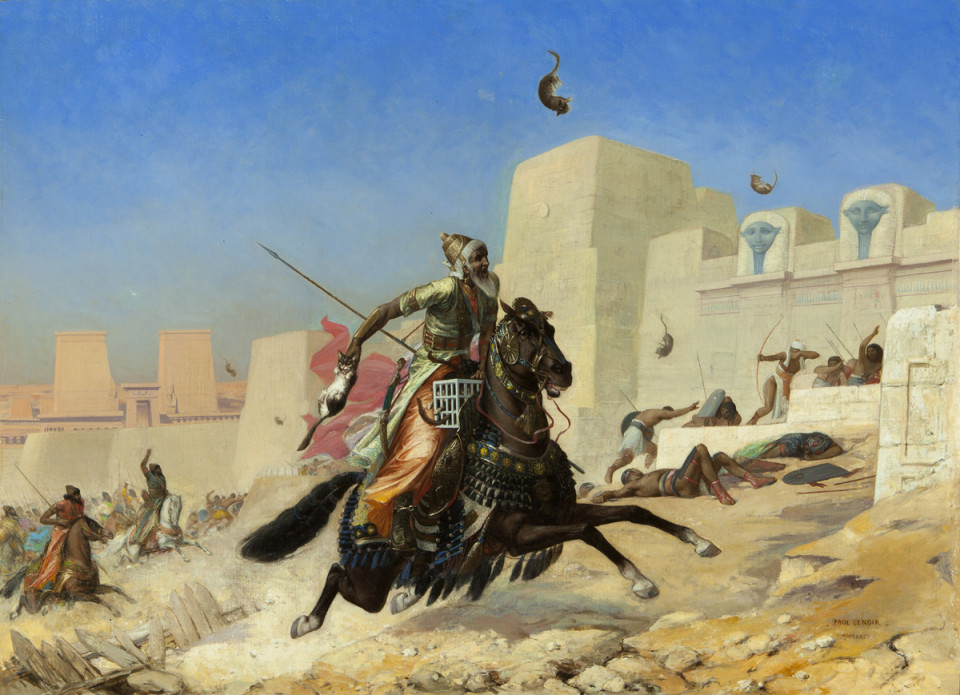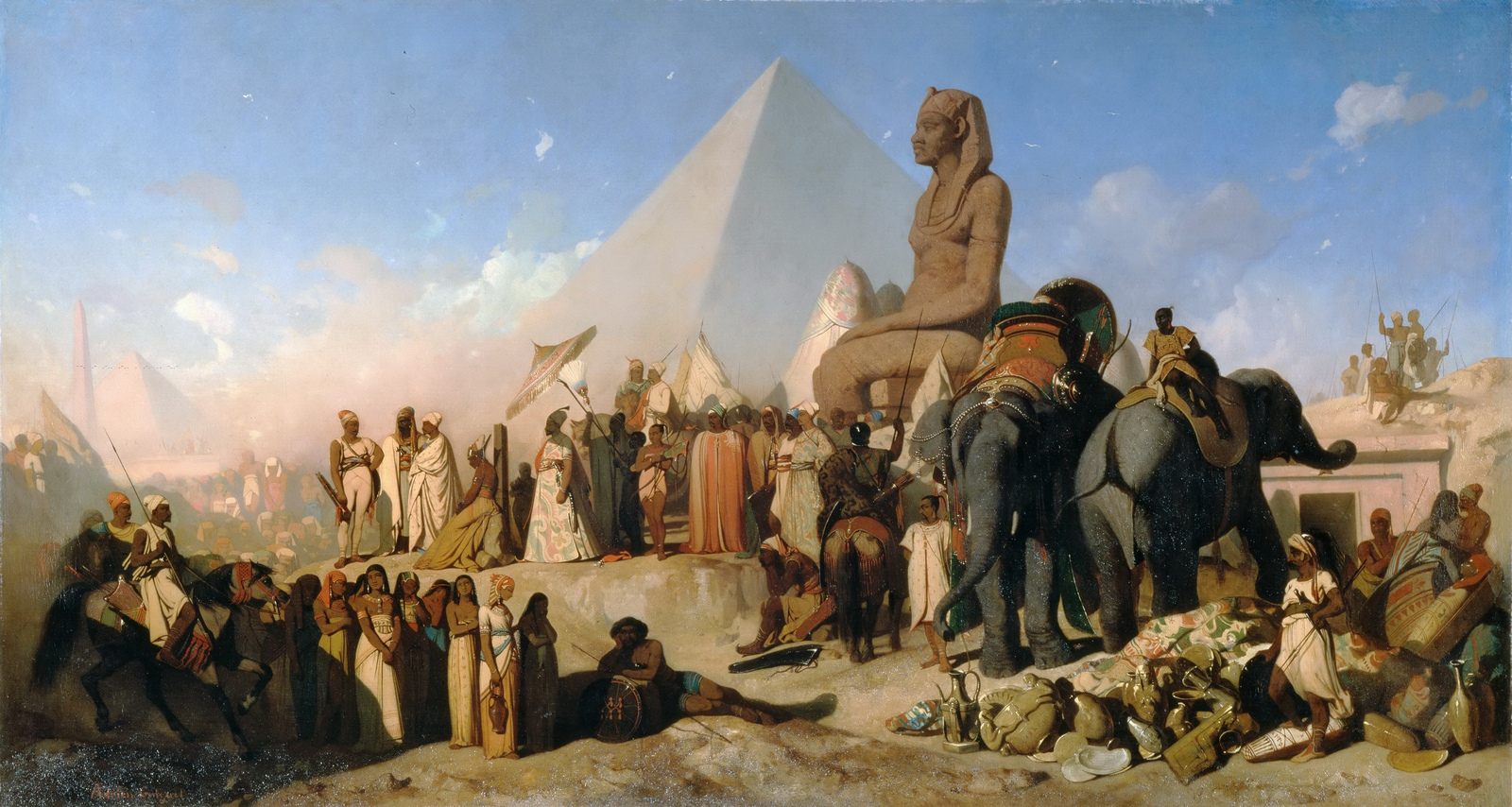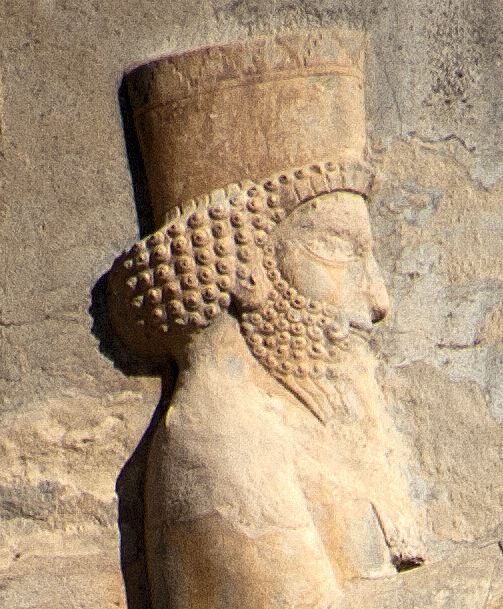|
Adrien Guignet
Jean-Adrien Guignet (1816 – 1854) was a French orientalist painter. Guignet was born in Annecy and grew up in the city of Autun. He was a friend of Hippolyte Michaud. He was a rather popular orientalist painter in his time, and was especially commanded for his Egyptian scenes. He died in Paris. Works ;Musée des beaux-arts de Beaune * ''Soldat gaulois'' (circa 1854) * ''Agar et Ismaël'' ;Musée du Louvre * ''Cambise et Psamménite'' * ''Épisode de la retraite des Dix-Mille'' (circa 1842) ;Musée des beaux-arts de Rouen * ''Joseph expliquant les rêves du pharaon'' ; Musée Rolin * ''Xerxes à l'Hellespont'' * ''Autoportrait'' ("Self-portrait") File:Adrien Guignet Joseph et Pharaon.jpg, ''Joseph expliquant les rêves du pharaon'', Musée des beaux-arts de Rouen File:Adrien Guignet - Retreat of the ten thousand.jpg, ''Retreat of the Ten Thousand, at the Battle of Cunaxa'' File:Adrien Guignet - Xerxes at the Hellespont.jpg, '' Xerxes at the Hellespont'' File:Meeting Bet ... [...More Info...] [...Related Items...] OR: [Wikipedia] [Google] [Baidu] |
Jean-Adrien Guignet
Jean-Adrien Guignet (1816 – 1854) was a French Orientalism, orientalist painter. Guignet was born in Annecy and grew up in the city of Autun. He was a friend of Hippolyte Michaud. He was a rather popular orientalist painter in his time, and was especially commanded for his Egyptian scenes. He died in Paris. Works ;Musée des beaux-arts de Beaune * ''Soldat gaulois'' (circa 1854) * ''Agar et Ismaël'' ;Musée du Louvre * ''Cambise et Psamménite'' * ''Épisode de la retraite des Dix-Mille'' (circa 1842) ;Musée des beaux-arts de Rouen * ''Joseph expliquant les rêves du pharaon'' ; Musée Rolin * ''Xerxes à l'Hellespont'' * ''Autoportrait'' ("Self-portrait") File:Adrien Guignet Joseph et Pharaon.jpg, ''Joseph (Genesis), Joseph expliquant les rêves du pharaon'', Musée des beaux-arts de Rouen File:Adrien Guignet - Retreat of the ten thousand.jpg, ''Retreat of the Ten Thousand, at the Battle of Cunaxa'' File:Adrien Guignet - Xerxes at the Hellespont.jpg, ''Xerxes I, Xerxes ... [...More Info...] [...Related Items...] OR: [Wikipedia] [Google] [Baidu] |
Xerxes I
Xerxes I ( peo, 𐎧𐏁𐎹𐎠𐎼𐏁𐎠 ; grc-gre, Ξέρξης ; – August 465 BC), commonly known as Xerxes the Great, was the fourth King of Kings of the Achaemenid Empire, ruling from 486 to 465 BC. He was the son and successor of Darius the Great () and his mother was Atossa, a daughter of Cyrus the Great (), the founder of the Achaemenid empire. Like his father, he ruled the empire at its territorial peak. He ruled from 486 BC until his assassination in 465 BC at the hands of Artabanus, the commander of the royal bodyguard. Xerxes I is notable in Western history for his invasion of Greece in 480 BC. His forces temporarily overran mainland Greece north of the Isthmus of Corinth until losses at Salamis and Plataea a year later reversed these gains and ended the second invasion decisively. However, Xerxes successfully crushed revolts in Egypt and Babylon. Xerxes also oversaw the completion of various construction projects at Susa and Persepolis. ... [...More Info...] [...Related Items...] OR: [Wikipedia] [Google] [Baidu] |
19th-century French Painters
The 19th (nineteenth) century began on 1 January 1801 ( MDCCCI), and ended on 31 December 1900 ( MCM). The 19th century was the ninth century of the 2nd millennium. The 19th century was characterized by vast social upheaval. Slavery was abolished in much of Europe and the Americas. The First Industrial Revolution, though it began in the late 18th century, expanding beyond its British homeland for the first time during this century, particularly remaking the economies and societies of the Low Countries, the Rhineland, Northern Italy, and the Northeastern United States. A few decades later, the Second Industrial Revolution led to ever more massive urbanization and much higher levels of productivity, profit, and prosperity, a pattern that continued into the 20th century. The Islamic gunpowder empires fell into decline and European imperialism brought much of South Asia, Southeast Asia, and almost all of Africa under colonial rule. It was also marked by the collapse of the large S ... [...More Info...] [...Related Items...] OR: [Wikipedia] [Google] [Baidu] |
Orientalist Painters by Tom Reiss
{{disambiguation ...
Orientalist may refer to: *A scholar of Oriental studies *A person or thing relating to the Western intellectual or artistic paradigm known as Orientalism *''The Orientalist'', a biography of author Lev Nussimbaum Lev Nussimbaum (October 17, 1905 – August 27, 1942), who wrote under the pen names Essad Bey and Kurban Said, was a writer and journalist, born in Kiev to a Jewish family. He lived there and in Baku during his childhood before fleeing the Bols ... [...More Info...] [...Related Items...] OR: [Wikipedia] [Google] [Baidu] |
1854 Deaths
Events January–March * January 4 – The McDonald Islands are discovered by Captain William McDonald aboard the ''Samarang''. * January 6 – The fictional detective Sherlock Holmes is perhaps born. * January 9 – The Teutonia Männerchor in Pittsburgh, U.S.A. is founded to promote German culture. * January 20 – The North Carolina General Assembly in the United States charters the Atlantic and North Carolina Railroad, to run from Goldsboro through New Bern, to the newly created seaport of Morehead City, near Beaufort. * January 21 – The iron clipper runs aground off the east coast of Ireland, on her maiden voyage out of Liverpool, bound for Australia, with the loss of at least 300 out of 650 on board. * February 11 – Major streets are lit by coal gas for the first time by the San Francisco Gas Company; 86 such lamps are turned on this evening in San Francisco, California. * February 13 – Mexican troops force William Walker ... [...More Info...] [...Related Items...] OR: [Wikipedia] [Google] [Baidu] |
1816 Births
This year was known as the ''Year Without a Summer'', because of low temperatures in the Northern Hemisphere, possibly the result of the Mount Tambora volcanic eruption in Indonesia in 1815, causing severe global cooling, catastrophic in some locations. Events January–March * December 25 1815–January 6 – Tsar Alexander I of Russia signs an order, expelling the Jesuits from St. Petersburg and Moscow. * January 9 – Sir Humphry Davy's Davy lamp is first tested underground as a coal mining safety lamp, at Hebburn Colliery in northeast England. * January 17 – Fire nearly destroys the city of St. John's, Newfoundland. * February 10 – Friedrich Karl Ludwig, Duke of Schleswig-Holstein-Sonderburg-Beck, dies and is succeeded by Friedrich Wilhelm, his son and founder of the House of Glücksburg. * February 20 – Gioachino Rossini's opera buffa ''The Barber of Seville'' premières at the Teatro Argentina in Rome. * March 1 – The Gork ... [...More Info...] [...Related Items...] OR: [Wikipedia] [Google] [Baidu] |
Battle Of Pelusium (525 BC)
The Battle of Pelusium was the first major battle between the Achaemenid Empire and Egypt. This decisive battle transferred the throne of the Pharaohs to Cambyses II of Persia, marking the beginning of the Achaemenid Twenty-seventh Dynasty of Egypt. It was fought near Pelusium, an important city in the eastern extremes of Egypt's Nile Delta, 30 km to the southeast of the modern Port Said, in 525 BC. The battle was preceded and followed by sieges at Gaza and Memphis. Background Herodotus on motives and background The most common recounting of the events leading to the battle of Pelusium is from Greek historians, particularly Herodotus. According to Herodotus, the conflict between the Pharaoh Amasis II of Egypt and Cambyses II of Persia was a gradual process involving multiple personalities, mostly Egyptians. According to Herodotus, an Egyptian physician was requested by Cambyses from Amasis on good terms, to which Amasis complied. The physician (most likely an ancient ophthalm ... [...More Info...] [...Related Items...] OR: [Wikipedia] [Google] [Baidu] |
Psammetichus III
Psamtik III ( Ancient Egyptian: , pronounced ), known by the Graeco-Romans as Psammetichus or Psammeticus (Ancient Greek: ), or Psammenitus (Ancient Greek: ), was the last Pharaoh of the Twenty-sixth Dynasty of Egypt from 526 BC to 525 BC. Most of what is known about his reign and life was documented by the Greek historian Herodotus in the 5th century BC. Herodotus states that Psamtik had ruled Egypt for only six months before he was confronted by a Persian invasion of his country led by King Cambyses II of Persia.''The New Encyclopædia Britannica: Micropædia'', Vol.9 15th edition, 2003. p.756 Psamtik was subsequently defeated at the Battle of Pelusium, and fled to Memphis where he was captured. The deposed pharaoh was carried off to Susa in chains, and later committed suicide. Family Psamtik III was the son of the pharaoh Amasis II and one of his wives, Queen Tentkheta. He succeeded his father as pharaoh in 526 BC, when Amasis died after a long and prosperous reign of some 44 ... [...More Info...] [...Related Items...] OR: [Wikipedia] [Google] [Baidu] |
Hellespont
The Dardanelles (; tr, Çanakkale Boğazı, lit=Strait of Çanakkale, el, Δαρδανέλλια, translit=Dardanéllia), also known as the Strait of Gallipoli from the Gallipoli peninsula or from Classical Antiquity as the Hellespont (; grc-x-classical, Ἑλλήσποντος, translit=Hellēspontos, lit=Sea of Helle), is a narrow, natural strait and internationally significant waterway in northwestern Turkey that forms part of the continental boundary between Asia and Europe and separates Asian Turkey from European Turkey. Together with the Bosporus, the Dardanelles forms the Turkish Straits. One of the world's narrowest straits used for international navigation, the Dardanelles connects the Sea of Marmara with the Aegean and Mediterranean seas while also allowing passage to the Black Sea by extension via the Bosporus. The Dardanelles is long and wide. It has an average depth of with a maximum depth of at its narrowest point abreast the city of Çanakkale. Th ... [...More Info...] [...Related Items...] OR: [Wikipedia] [Google] [Baidu] |
Battle Of Cunaxa
The Battle of Cunaxa was fought in the late summer of 401 BC between the Persian king Artaxerxes II and his brother Cyrus the Younger for control of the Achaemenid throne. The great battle of the revolt of Cyrus took place 70 km north of Babylon, at Cunaxa ( el, Κούναξα), on the left bank of the Euphrates. The main source is Xenophon, a Greek soldier who participated in the fighting. Preparations Cyrus gathered an army of Greek mercenaries, consisting of 10,400 hoplites and 2,500 light infantry and peltasts, under the Spartan general Clearchus, and met Artaxerxes at Cunaxa. He also had a large force of levied troops under his second-in-command Ariaeus. The strength of the Achaemenid army was 40,000 men. When Cyrus learned that his elder brother, the Great King, was approaching with his army, he drew up his army in battle array. He placed the Greek mercenaries on the right, near the river. In addition to this they were supported on their right by some cavalry, 1,000 ... [...More Info...] [...Related Items...] OR: [Wikipedia] [Google] [Baidu] |
Orientalism
In art history, literature and cultural studies, Orientalism is the imitation or depiction of aspects in the Eastern world. These depictions are usually done by writers, designers, and artists from the Western world. In particular, Orientalist painting, depicting more specifically the Middle East, was one of the many specialisms of 19th-century academic art, and the literature of Western countries took a similar interest in Oriental themes. Since the publication of Edward Said's ''Orientalism (book), Orientalism'' in 1978, much academic discourse has begun to use the term "Orientalism" to refer to a general patronizing Western attitude towards Middle Eastern, Asian, and North African societies. In Said's analysis, the West Essentialism, essentializes these societies as static and undeveloped—thereby fabricating a view of Oriental culture that can be studied, depicted, and reproduced in the service of Imperialism, imperial power. Implicit in this fabrication, writes Said, is the ... [...More Info...] [...Related Items...] OR: [Wikipedia] [Google] [Baidu] |
Ten Thousand
The Ten Thousand ( grc, οἱ Μύριοι, ''oi Myrioi'') were a force of mercenary units, mainly Greeks, employed by Cyrus the Younger to attempt to wrest the throne of the Persian Empire from his brother, Artaxerxes II. Their march to the Battle of Cunaxa and back to Greece (401–399 BC) was recorded by Xenophon, one of their leaders, in his work ''Anabasis''. Campaign Between 401 and 399 BC, the Ten Thousand marched across Anatolia, fought the Battle of Cunaxa, and then marched back to Greece. Xenophon stated in ''Anabasis'' that the Greek heavy troops routed their opposition twice at Cunaxa at the cost of only one Greek soldier wounded. Only after the battle did they hear that Cyrus had been killed, making their victory irrelevant and the expedition a failure. The Ten Thousand found themselves far from home with no food, no employer, and no reliable allies. They offered to make their Persian ally Ariaeus king, but he refused on the grounds that he was not of royal bloo ... [...More Info...] [...Related Items...] OR: [Wikipedia] [Google] [Baidu] |








